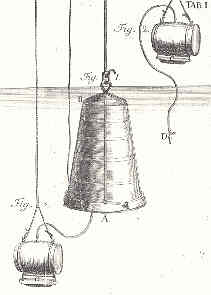| CLASSIC DIVE BOOKS
Reproductions - historic diving books.
|
HOMEPAGE |
| With improved technology
in the design and use of 'instant' printing equipment, and the the use
of Optical Recognition software, it is possible to reproduce a book relatively
easily and cheaply. This has been achieved with several old, out-of-print
diving-related books, especially those where no copyright exists. Some
reproductions are excellent, an exact 'replica' of the original internal
pages, but not alwayss of the binding; some have been done well and are
welcome additions to aany serious library. Other reproductions have been
nothing short of rubbish, with little care to ensure that the OCR softwaare
has done its job correctly. Considering the age of some of the original
books reproduced, it is understandable that the OCR software will misinterpret
a word here or there, and in some instances, will find it very difficult
to interpret. In extreme cases, OCR soiftware will simply not word, for
say 17th century manuscripts where the letter 's' is often written as the
letter 'f' for example. All OCR text should be edited, but this has not
always been the case. and thus the end result is a virtually unreadable
reproduction. Some books have been reproduced in text only, with the illustrations
omitted - 'because they were too difficult to reproduce' was one excuse
in a book of simple illustrations that could very easily have been scanned.
It is my opiniuon that if a book cannot be reproduced faithfully, in correct
text and illustrations it should not be done at all. One 'reproducer'
indicated that illustrations were left out of an important original book
reproducction because off cost - "it is better to at least reproduce the
text tahn do nothing at all". I disagree. Do it properly or not at all.
Some reproductions have cheap binmdings which again does nothing to endear
the end result to the reader. Some reproductions have been done exceptionally
well however with clear edited OCR text faithfully reproducing the original
text, and often with additional annotation. Some reproductions have also
included a page copy of the original text, especially if there are illustrations
to include, or where the original text font in itself is of interest. It
all gets back to the care and dedication of the reproder - do they want
to make a good reproduction that a reader will enjoy, or are they out to
make a quick dollar. The problem is that often it is impossible to tell
the quality of the reproduction until you have bought and received it.
This website aims to be positive, but you may find ssome criticism in this
section. My advise is to be careful when buying a reproduction.
A 'reproduction' does not have to be an exact facsimile of the original. It must of course contain the exact text, and illustrations, and not omit any detail, but after OCR scanning or retyping, it can be reset for readability. Often an original is hard to read for the reasons mentioned above. The original text should not be tampered with, unless it is done with the express aim of readability, through sentence construction and annotation. If this occurs it is important that the original text, through a complete scannned page, be also reproduced in the same volume. It is also an advantage to have the original title page scanned and reproduced, and if the cover and/or spine is anything but plain, a reproduced scan is also interesting. Note that many old texts were not bound by the publisher: purchasers would buy the book in plain or sometimes printed 'wrappers' - it was then up to the purchaser to arrange their own binding according to taste and cost. Does a reproduction affect
the value of the original? I would doubt it. In some instances it may actually
increase the value of the original in that the reproduction will make the
public more aware of the original's existence. You may never have heard
of Frank Meir's 'Up For Air' but after seeing a reproduction you may pine
for a copy. In time, a well produced reproduction may gain in value,
or at least retain its value depending on interest and print-run etc. (Many
reproductions are produced on a 'print-on-demand' basis, but someone has
to do this, and people, and printers, come and go.) Shoddy reproductions
are not worth the paper they are printed on; if a shoddy reproduction is
popular because of what the interest and status of the original book, then
someone will come along one day and do justice to the original book.
Please note: The books are listed for interest only, and not offered for sale. |
| It is fitting that we start
this page with the excellent monographs reproduced by the Historical Diving
Society in the United Kingdom. This active group has taken great care to
select and reproduce a number of fascinating publications, the end result
being of high standard both in content and physical design.
The books are available (while stocks last) at the society; see www.thehds.com See also Under the Waves, by R.M.Ballantyne. |
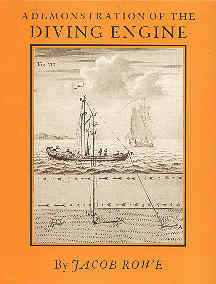 |
A DEMONSTRATION OF THE
DIVING ENGINE; IT'S INVENTION AND VARIOUS USES.
By Jacob Rowe.
|
||
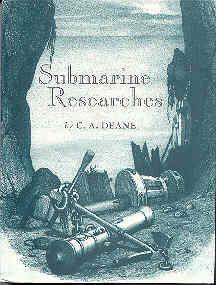 |
SUBMARINE RESEARCHES
by C.A.Deane.
|
||
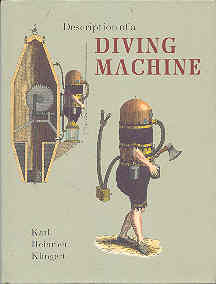 |
DESCRIPTION OF A DIVING
MACHINE
Karl Heinrich Klingert.
|
||
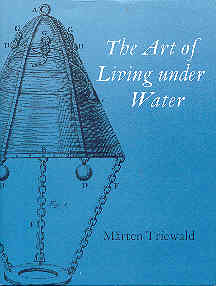 |
THE ART OF LIVING UNDER
WATER
Marten Triewald.
|
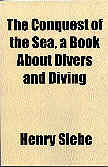 |
THE CONQUEST
OF THE SEA, A BOOK ABOUT DIVERS AND DIVING
Henry Siebe. OCR scanned copy, reprint, by General Books, 2009. Softcover, 79 pages, no illustrations. Dimensions 23 x 15 cm. Note: twenty-four of these pages are listings of previous publications by the original publishers, no doubt reproduceed from the original of course published in 1874. See original: 19th century books. There is a note at the beginning of the book stateing the fact that this is an OCR scanned book and that this "can result in a lot of typos and missing text .... but we feel it is more important to make the book available for a low price or not at all". I'm not so sure that this is a reasonable philiosphy if this book is an example. There are many errors in the scanning, both in the letters/words and in the paragraph layout. This could have been rather quickly overcome by a manual edit by reading and correcting where required; it is thus rather annoying to read. Again, with further effort, and admittedly cost, any illustrations could have been scanned and included (especially of the excellent wood engravings in the original). The General Books company should have realised that anyone wanting to read this historic diving book would have a very keen interest in diving history and would not mind, I am sure, paying for the priviledge of a good facsimile - ideally a photographic scan of the book pages including the engravings, and a separate edited OCR reading text. This has been superbly achieved as witness the books produced by the (UK) Historical Diving Society (see above). Henry Siebe deserved better - and so do we. [ps] |
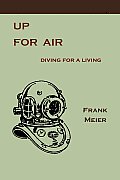 |
UP FOR AIR
- Diving for a Living.
Frank Meier. Martono Publishing, USA, 2009. Reprinted from the original published by E.P.Dutton & Co., Inc., 1940. See Author's page. |
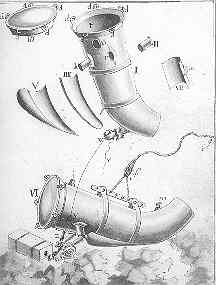
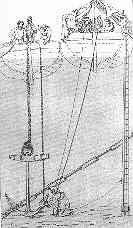

 .
.